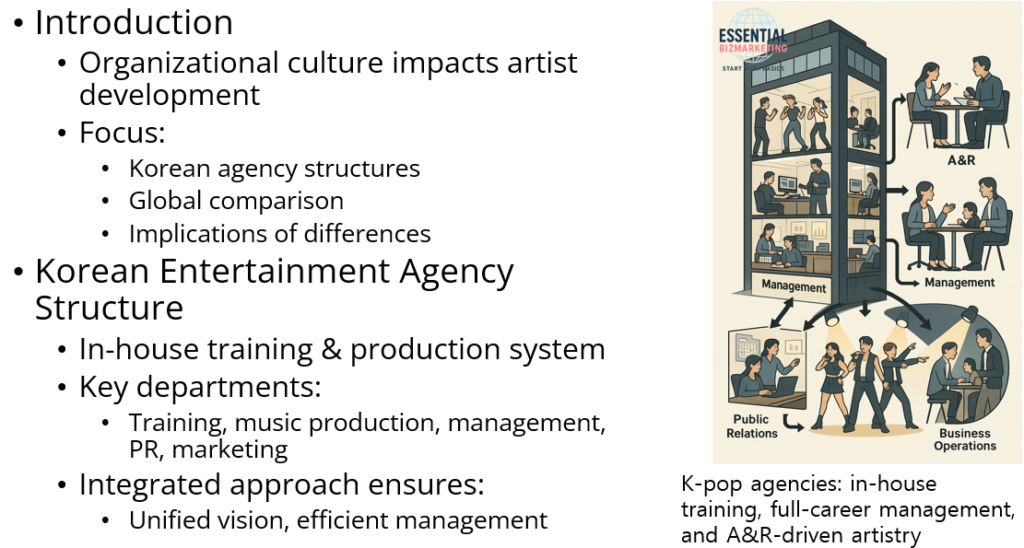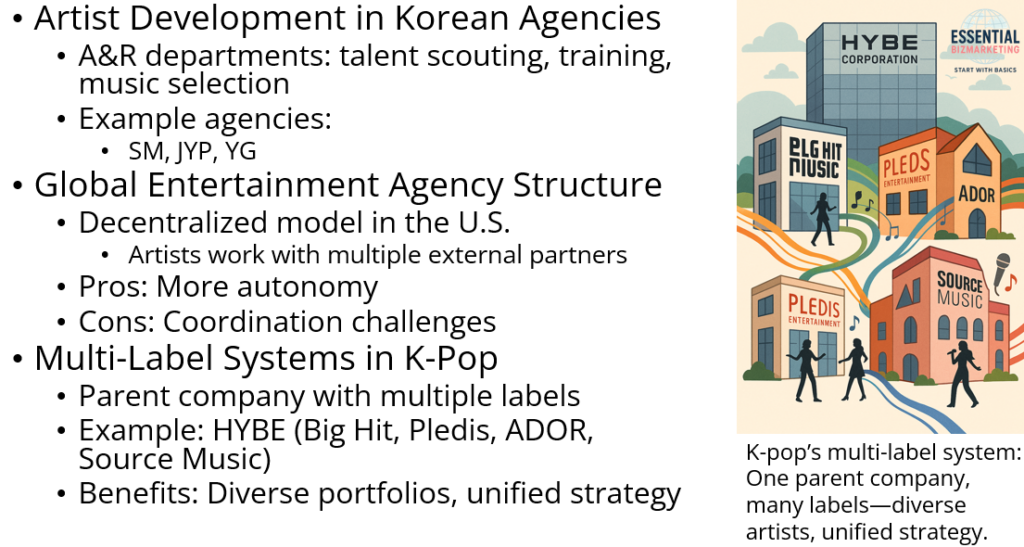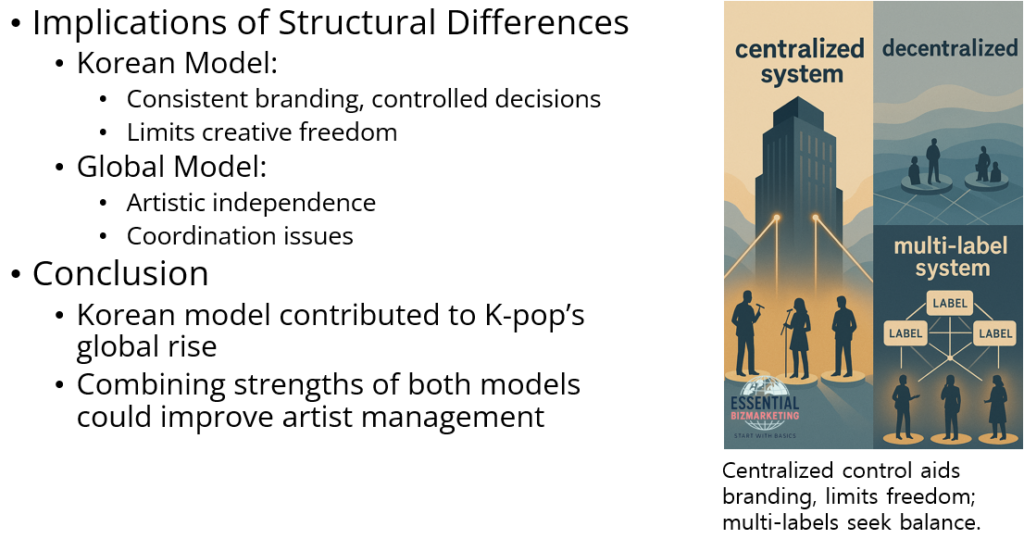Korean Entertainment Agency Structure

The organizational culture of entertainment agencies significantly influences artist development and the content delivered to audiences. Korean entertainment agencies, particularly those in the K-pop industry, have cultivated unique organizational structures that differ markedly from their global counterparts. This article explores the organizational frameworks of Korean entertainment agencies, contrasts them with global models, and examines the implications of these differences.
Korean Entertainment Agency Structure
Korean entertainment agencies typically operate on an “in-house training and production” system. Artists enter into exclusive contracts with agencies that oversee every aspect of their careers, from rigorous training and debut to promotions and management. These agencies encompass various departments, including trainee development, music production, management, public relations, marketing, and business operations. This integrated approach facilitates close collaboration among teams, ensuring a unified vision and efficient management of artists’ activities. Such meticulous planning and execution contribute to the polished image associated with K-pop artists.

For instance, major Korean agencies like SM Entertainment, JYP Entertainment, and YG Entertainment have established robust A&R (Artists and Repertoire) departments responsible for talent scouting, training, and music selection. These departments work closely with artists to develop their skills and curate their musical repertoire, ensuring alignment with the agency’s strategic vision.
Global Entertainment Agency Structure
In contrast, global entertainment agencies, particularly in the United States, often adopt a more decentralized model. Artists may collaborate with multiple external partners, including managers, publicists, and production companies, each specializing in specific aspects of their careers. This model grants artists greater autonomy and flexibility, enabling them to assemble teams tailored to their individual needs and artistic visions. However, it may also lead to challenges in coordination and consistency, as the various entities involved may not share a unified strategy.
Multi-Label Systems in K-Pop
Korean agencies have evolved by implementing multi-label systems within their organizations. Under this model, a parent company establishes multiple subsidiary labels, each responsible for managing specific artists or groups. For example, HYBE Corporation oversees labels like Big Hit Music, Pledis Entertainment, ADOR, and Source Music, each operating with a degree of independence while aligning with the overarching corporate strategy. This approach allows for the cultivation of diverse artist portfolios and the development of distinct musical styles under one corporate umbrella.
Implications of Structural Differences

The centralized structure of Korean agencies enables comprehensive control over artists’ careers, ensuring consistent branding and streamlined decision-making. However, it may also limit artists’ creative freedom and personal agency. Conversely, the decentralized global model offers artists greater independence but can result in fragmented management and potential conflicts between different stakeholders. The multi-label system adopted by some Korean agencies seeks to balance these dynamics by fostering diversity and innovation within a structured framework.
Conclusion
The organizational cultures of entertainment agencies significantly influence the development and success of artists. Korean agencies’ integrated approach has been instrumental in the global rise of K-pop, offering lessons in coordination and brand consistency. As the entertainment industry continues to globalize, understanding and integrating the strengths of various organizational models may lead to more dynamic and effective artist management strategies.
📚 References
Korea Culture and Information Service. (2024). K-pop suggests a new direction for the global music industry’s production system. Retrieved from https://www.kocis.go.kr/koreanet/view.do?seq=1048904
Kim, J. (2013, October 9). “SM, JYP, YG core departments”… The company is revealed through A&R. Star Today. Retrieved from https://www.mk.co.kr/news/musics/5475799
Lee, J. (2023). A comparative study on the management strategies of major idol entertainment agencies in Korea and Japan. Journal of the Korea Entertainment Industry Association, 17(7), 1–15. https://www.dbpia.co.kr/journal/articleDetail?nodeId=NODE11556683
📁 Start exploring the Blog
📘 Or learn more About this site
🧵 Or follow along on X (Twitter)
🔎 Looking for sharp perspectives on global trade and markets?
I recommend @GONOGO_Korea as a resource I trust and regularly learn from.
